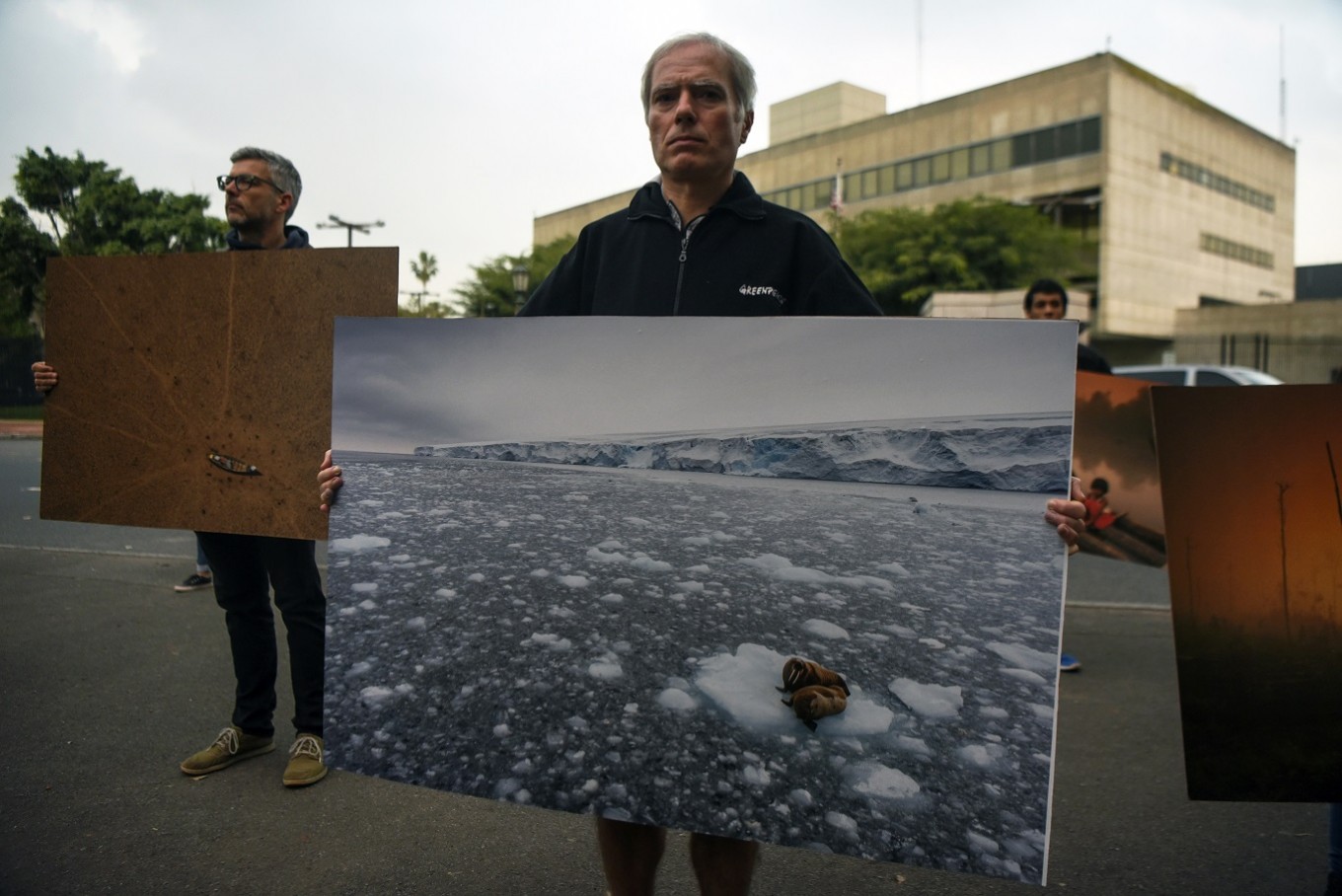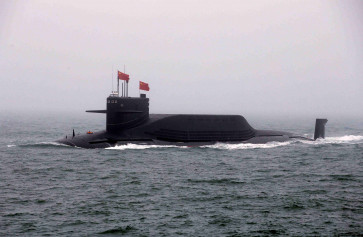Popular Reads
Top Results
Can't find what you're looking for?
View all search resultsPopular Reads
Top Results
Can't find what you're looking for?
View all search resultsClimate science: Bad news gets worse
Change text size
Gift Premium Articles
to Anyone
 Greenpeace activists demonstrate outside the United States embassy in Buenos Aires, Argentina, on June 1, 2017, against US President Donald Trump's decision that his country, the world's second largest emitter of greenhouse gases, would pull out of the 2015 Paris climate agreement. (AFP/Eitan Abramovich)
Greenpeace activists demonstrate outside the United States embassy in Buenos Aires, Argentina, on June 1, 2017, against US President Donald Trump's decision that his country, the world's second largest emitter of greenhouse gases, would pull out of the 2015 Paris climate agreement. (AFP/Eitan Abramovich)
P
resident Donald Trump has announced that America will pull out of the 2015 Paris climate agreement, but scientists say the peril from global warming has never been greater.
Earth's average global temperature is scaling new heights, sea ice is retreating, extreme weather events have become more frequent and species are increasingly under threat, they say.
A summary of the evidence:
- 1.1 degrees -
In 2016, Earth's average surface temperature hit a record level for the third consecutive year since records began in 1880.
The global average temperature was about 1.1 degree Celsius (1.98 Fahrenheit) higher than the pre-industrial era. This is when mankind’s mass burning of coal, and later oil and gas, started hiking levels of heat-trapping carbon dioxide in the atmosphere.
The 21st century has already seen 16 of the 17 hottest years on record.
Some of the world's biggest cities may be as much as eight degrees Celsius (14.4 degrees Fahrenheit) hotter by 2100, said a recent study.
Read also: Trump pulls US out of global climate change accord
- Melting ice -
Arctic summer sea ice shrank to 4.14 million square kilometres (1.6 million square miles) in 2016 -- the second-lowest after 2012, when it reached 3.39 million km2.
The Arctic Ocean could be ice-free in summer as early as 2030.
In parts of Arctic Russia, temperatures were 6 C to 7 C higher than the long-term average.
On the other extreme of the world, Antarctica, sea ice last year hit its lowest extent ever recorded by satellites.
High-altitude glaciers, meanwhile, declined in surface area in 2015 for the 36th year in a row
- 400 parts per million -
The atmospheric concentrations of the three most potent greenhouse gases -- carbon dioxide (CO2), methane (CH4) and nitrous oxide (N2O) -- all hit new highs in 2016.
For the first time on record, in 2015, the amount of CO2 in the atmosphere averaged 400 parts per million (ppm).
Most climate scientists agree that greenhouse gas concentrations in the atmosphere must be capped at 450 ppm of CO2 equivalent (CO2e) for a fighting chance to limit average global warming to two degrees Celsius (3.6 degrees Fahrenheit) over pre-industrial levels.
This is the cap enshrined in the Paris Agreement.
Fossil fuel-generated greenhouse gas emissions are thought to have remained stable in 2016 for the third consecutive year, even as the global economy grew. But to stay on target for 2 C, they need to decline.
Meanwhile, scientists are also worried about a rise in levels of methane, which has a far more potent warming effect than CO2.
The rise is so far unexplained. But one feared source is melting Arctic permafrost, which could eventually release billions of tonnes of carbon dioxide.
Read also: Angry Europe vows to defend climate pact after Trump pullout
- 70 millimetres -
Sea level rise, caused when ice melts and warmer water expands, appears to be accelerating, according to the latest data.
The average ocean level was 70 millimetres (2.75 inches) higher in 2015 than in 1993, having risen as much as 30 percent faster in the 10 years to 2015 than in the previous decade.
The pace is likely to pick up further as ice sheets and glaciers shed mass, threatening the homes and livelihoods of tens of millions of people in low-lying areas around the world.
The National Oceanic and Atmospheric Administration (NOAA) said in January the global average sea level could be between 0.3 and 2.5 metres (one foot to 8.2 feet) higher by 2100.
On current trends, meltwater just from the Antarctic ice sheet could contribute to a metre of lift, according to one study.
- Extreme events -
The WMO says there are demonstrable links between man-made climate change and some extreme events, especially heatwaves.
The number of climate-related extreme events -- droughts, forest fires, floods, major storm surges -- has doubled since 1990, research has shown.
The intensity of typhoons battering China, Taiwan, Japan and the Korean Peninsula since 1980, for example, has increased by 12 to 15 percent.
Natural disasters drive about 26 million people into poverty every year, says the World Bank, and cause annual losses of about $520 million (463 million euros).
- 1,688 species -
Of the 8,688 species of animals and plants listed as "threatened" on the International Union for the Conservation of Nature's (IUCN) Red List, 19 percent -- 1,688 species -- have been negatively affected by climate change.
Scientists warn that parts of Australia's Great Barrier Reef may never recover from an unprecedented second straight year of bleaching.










